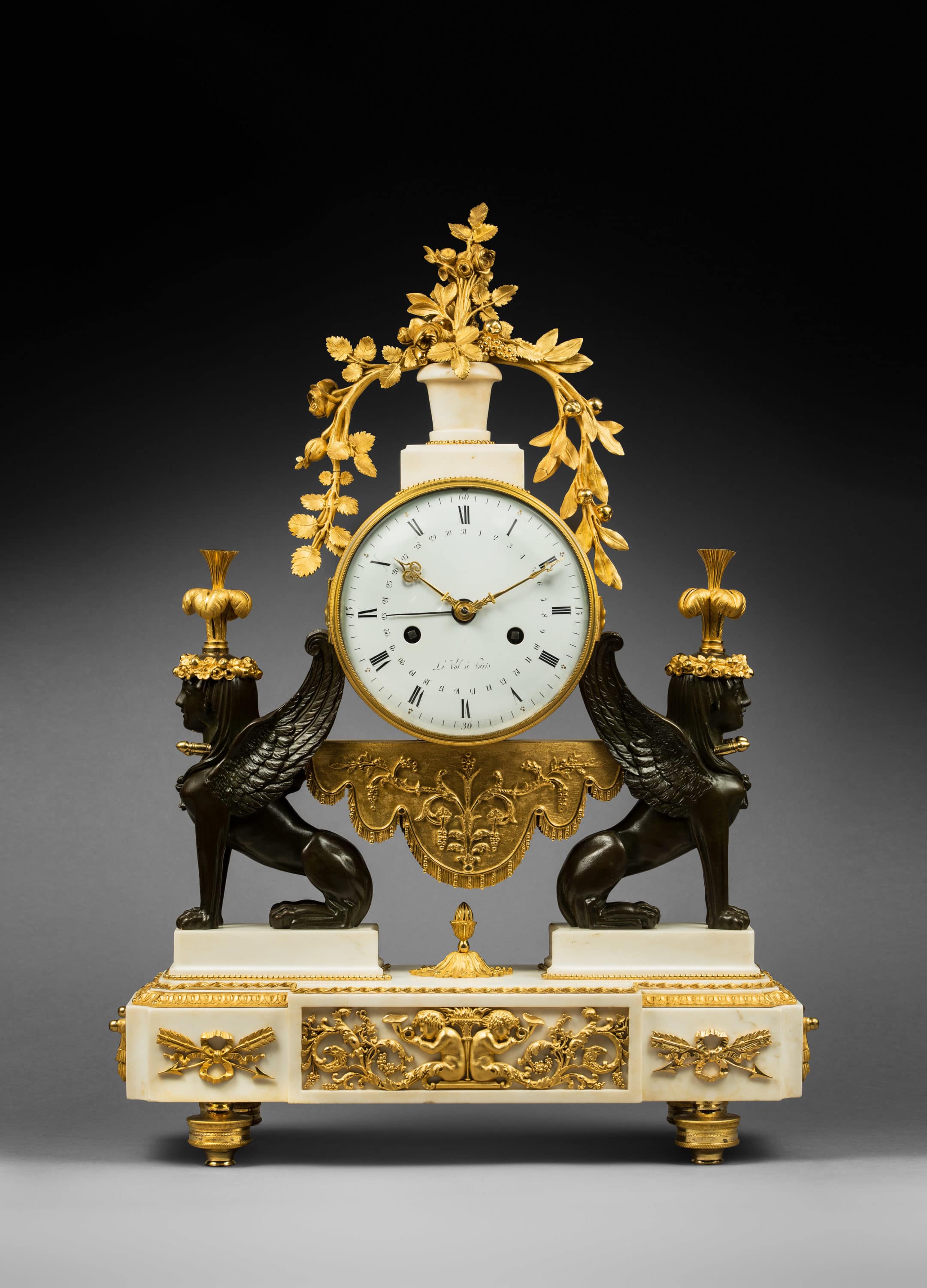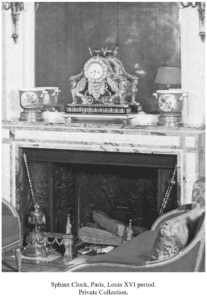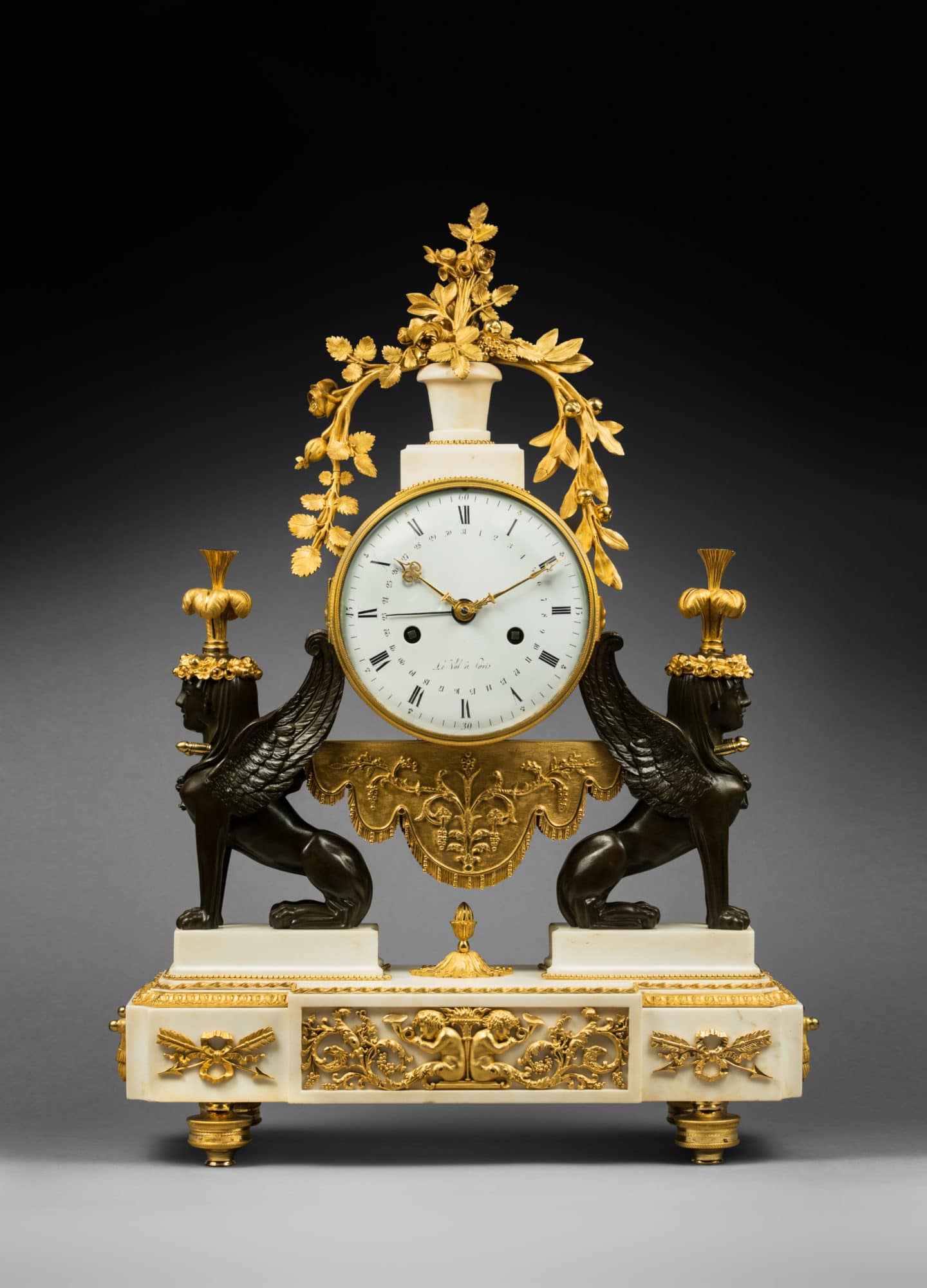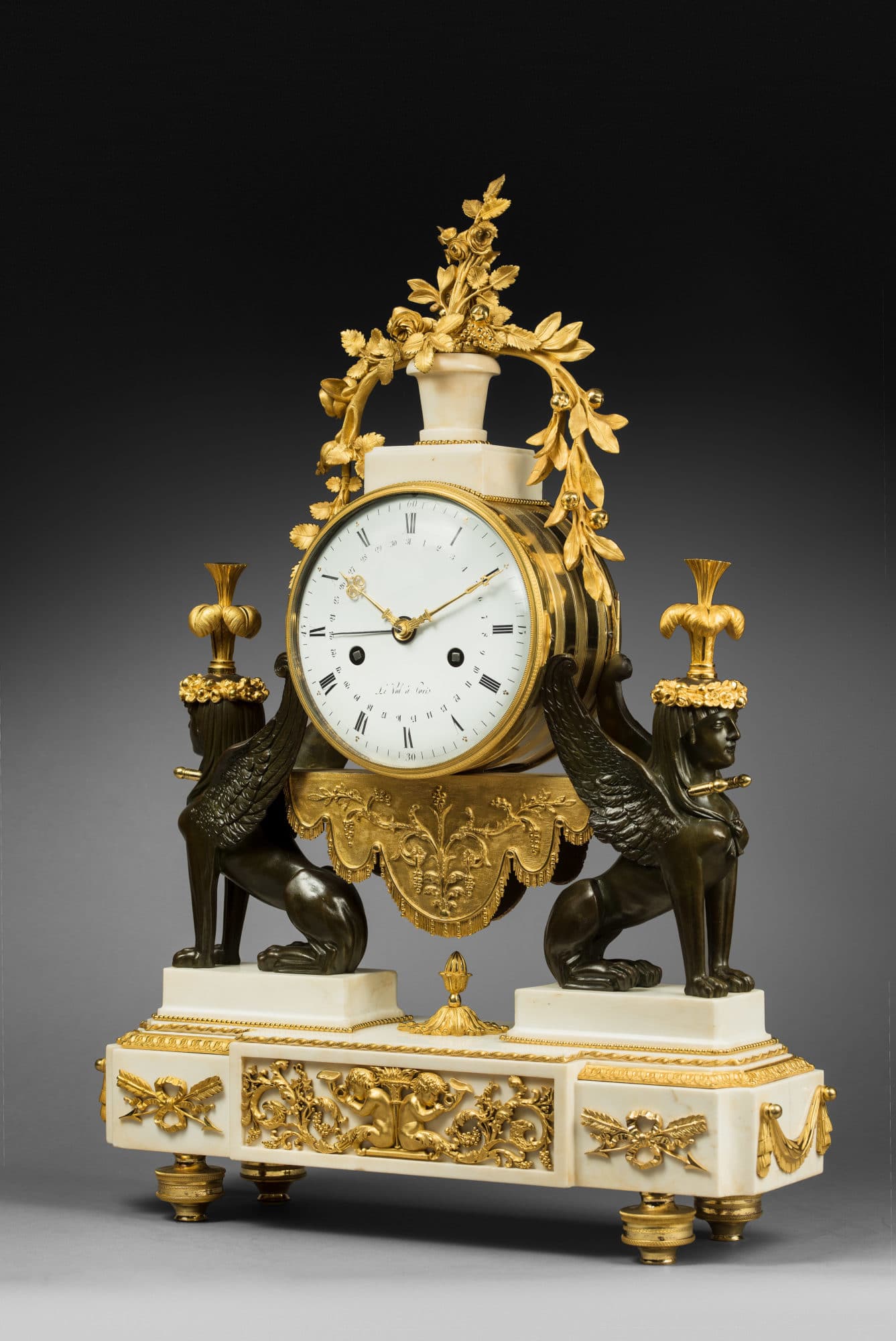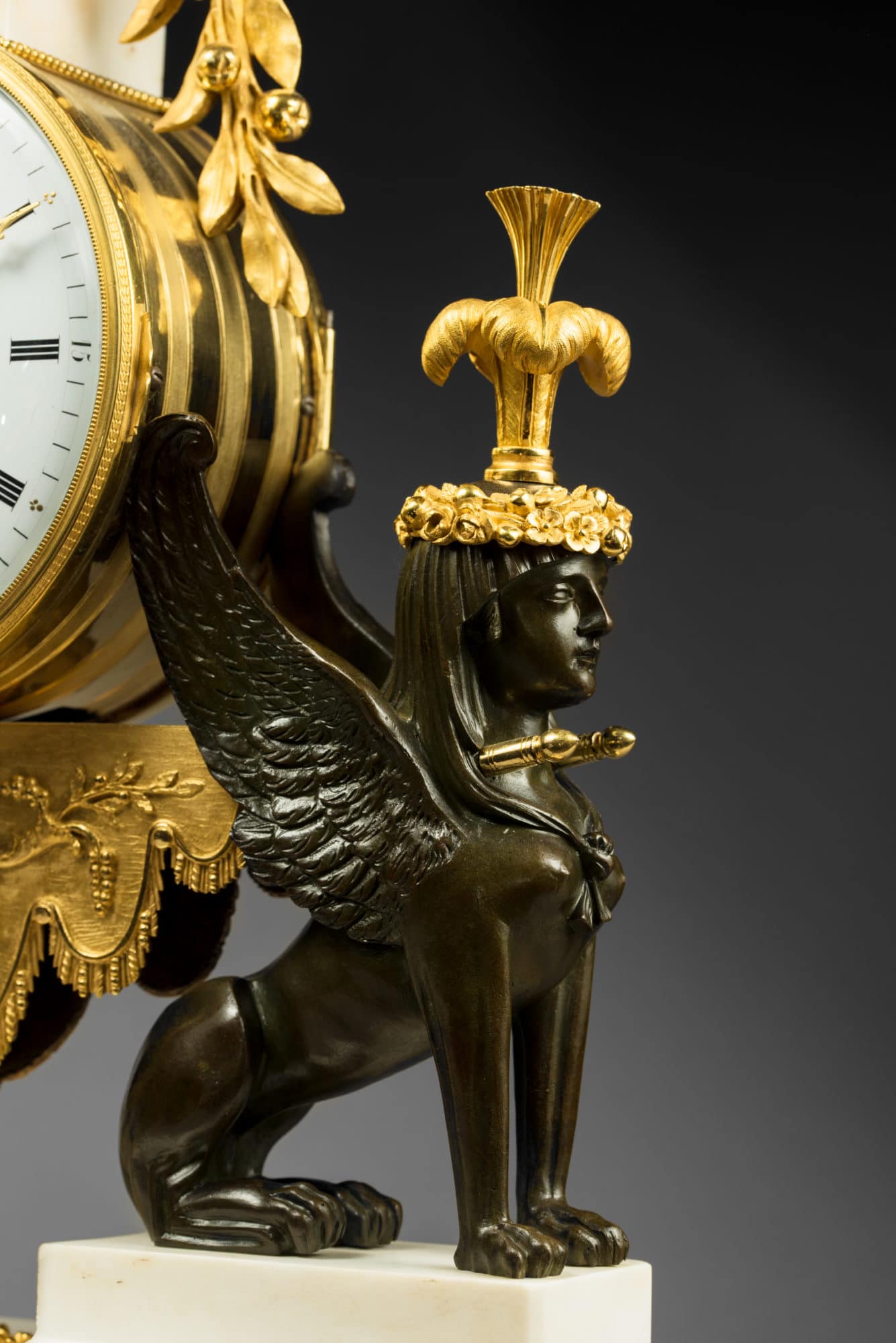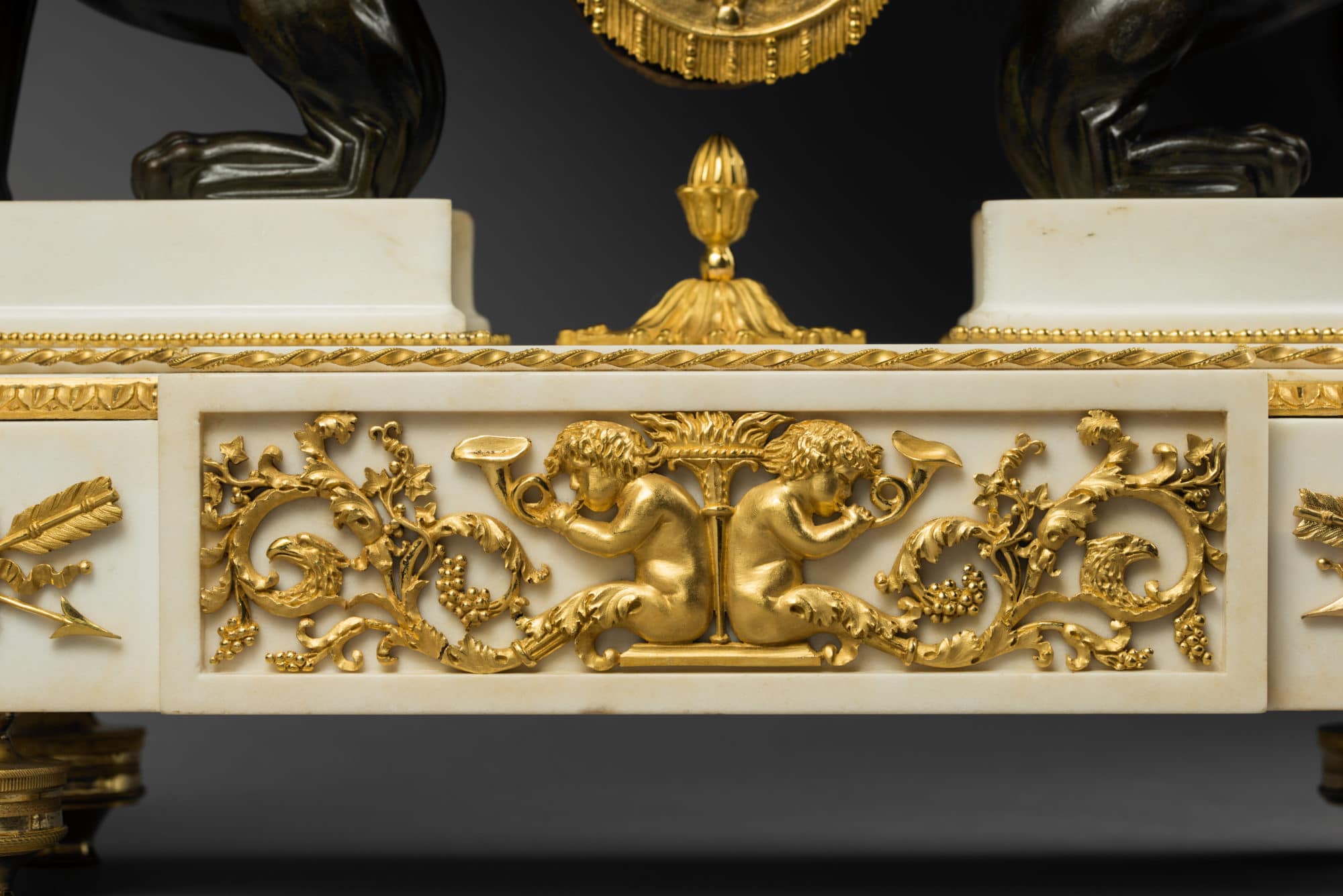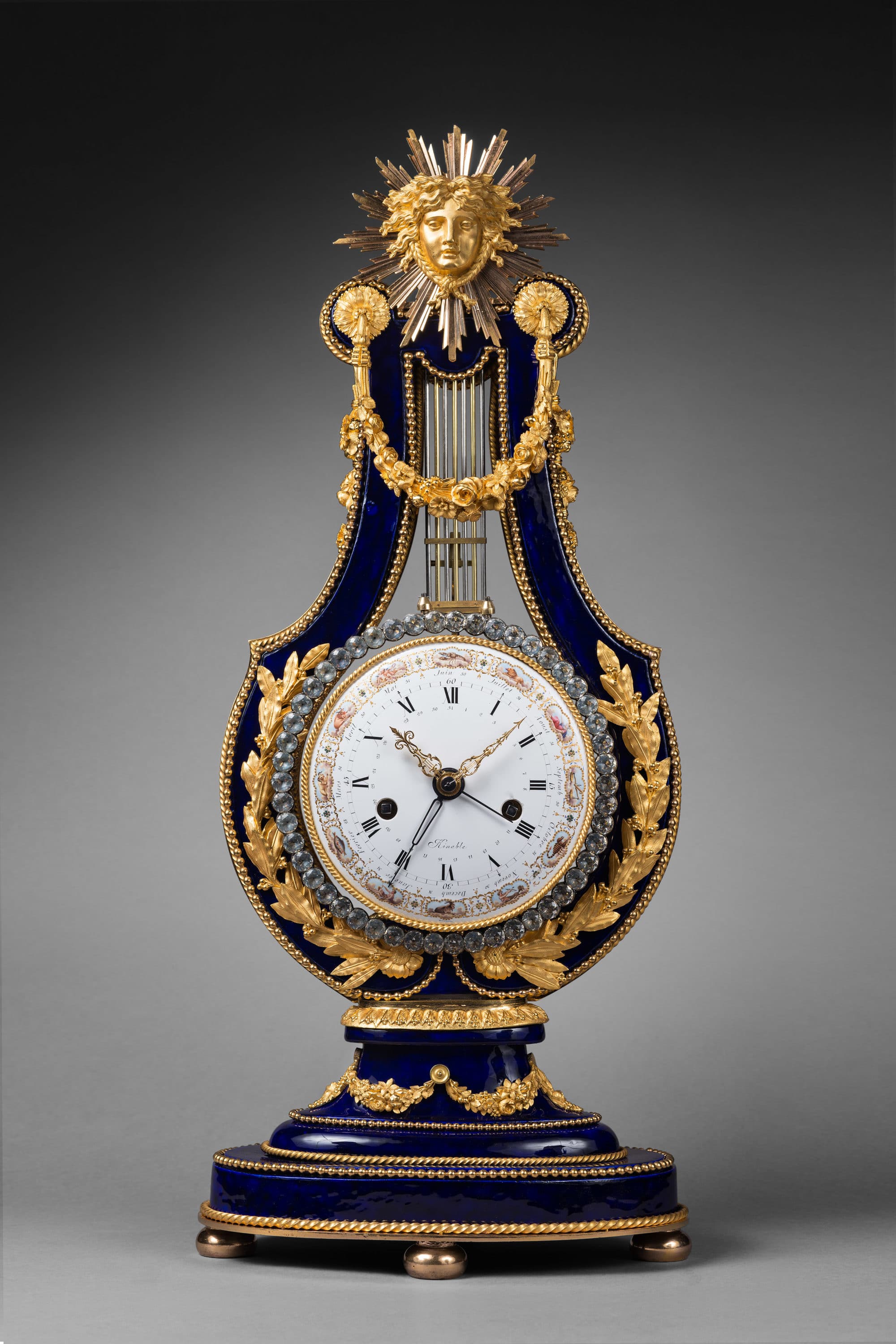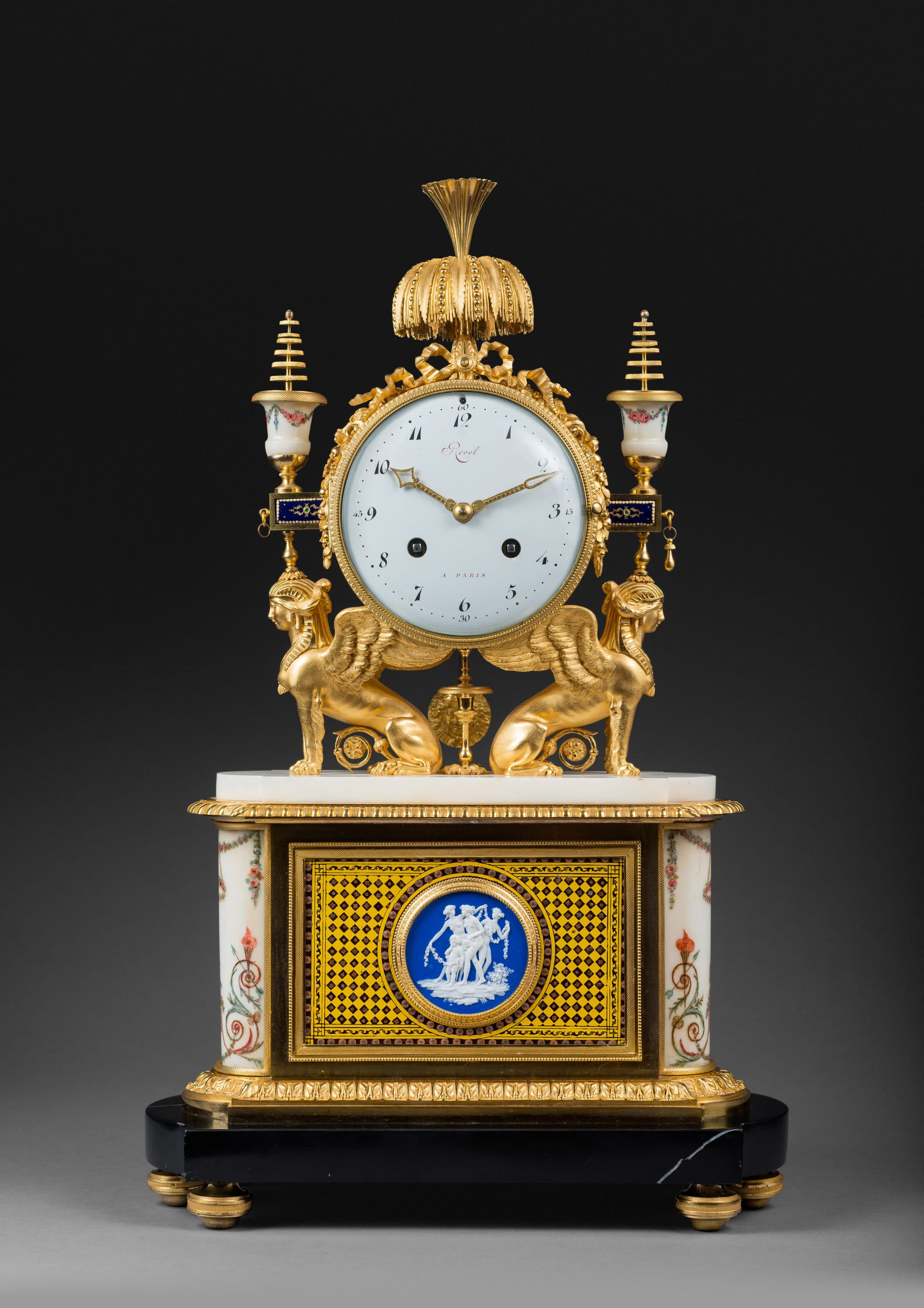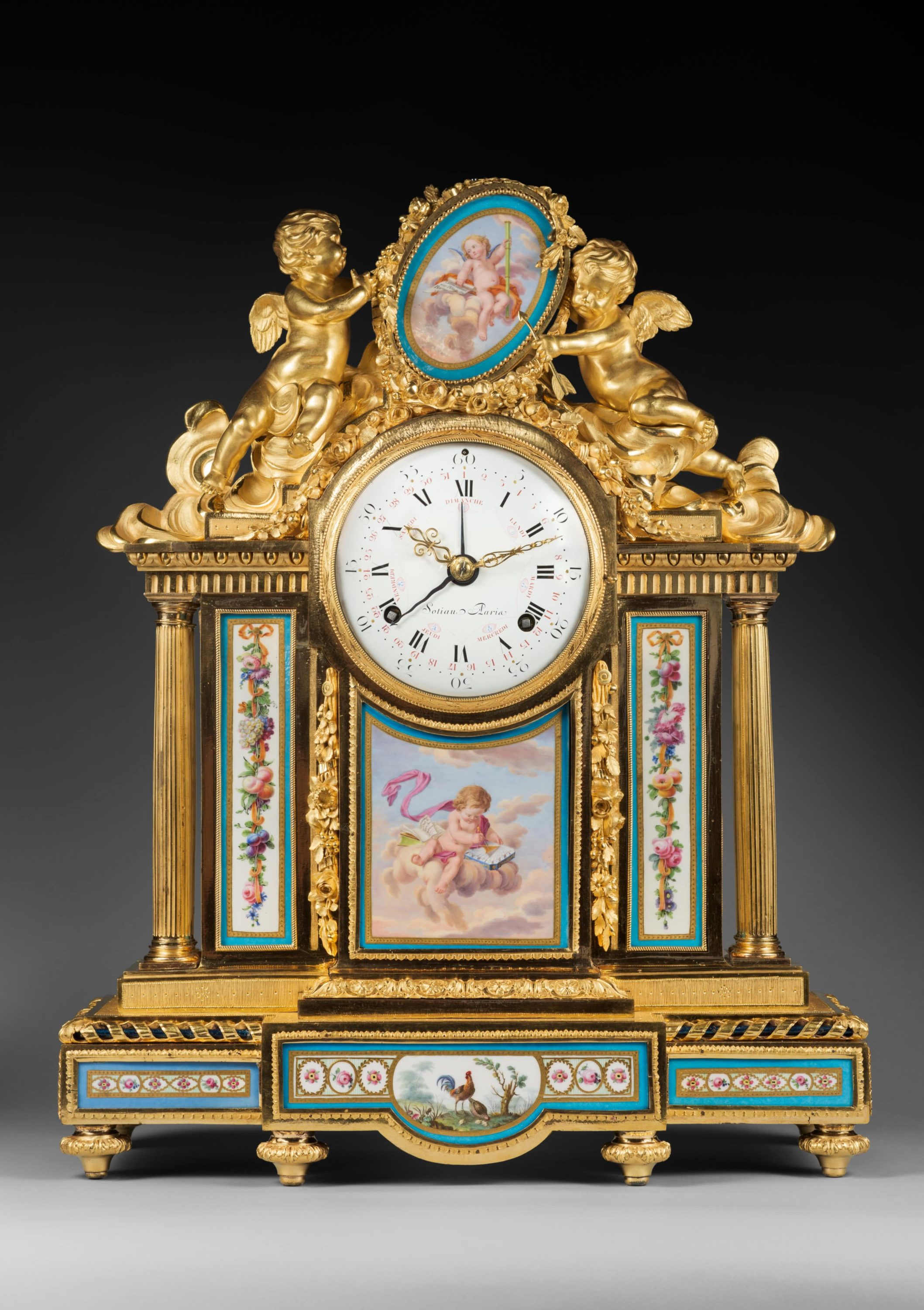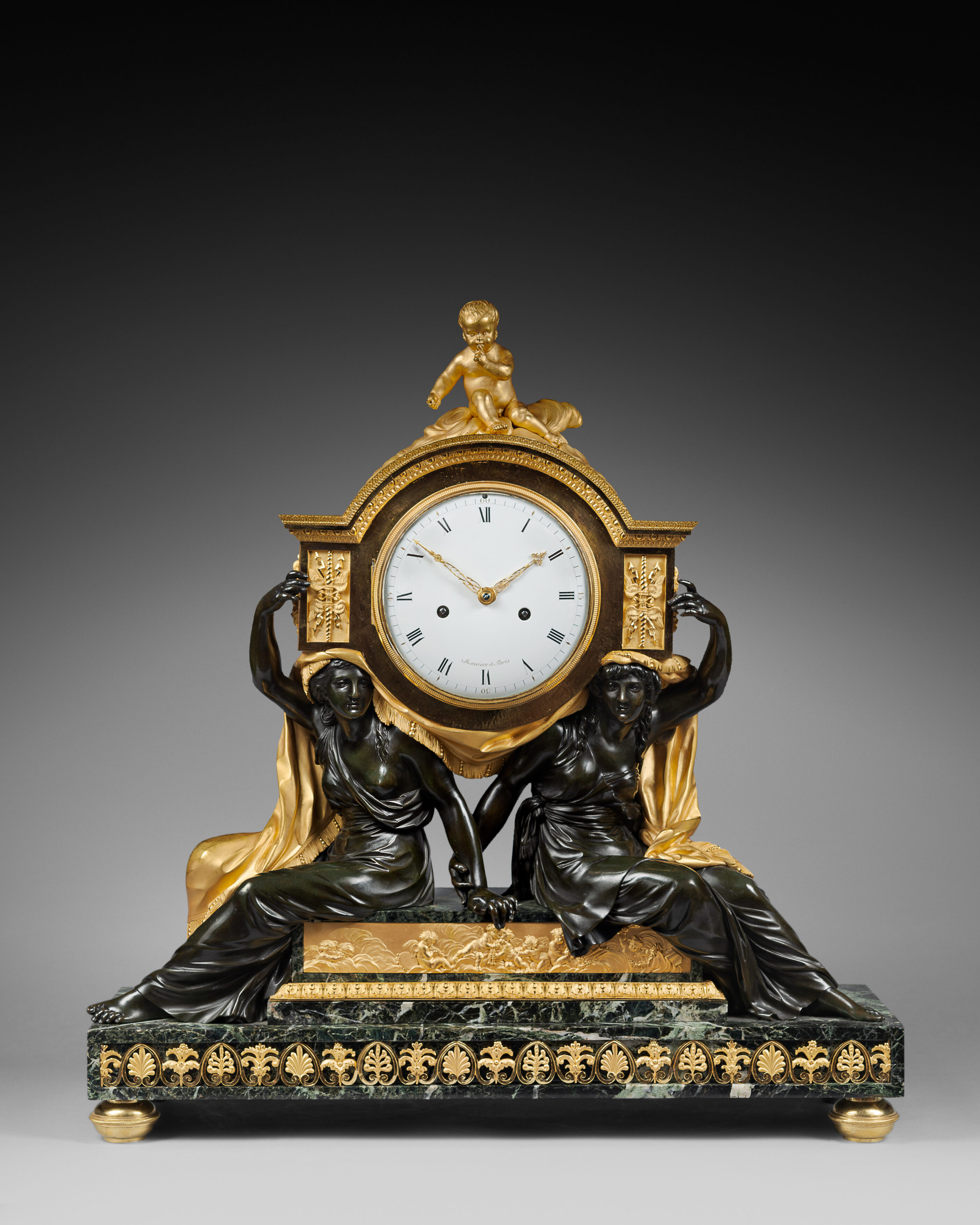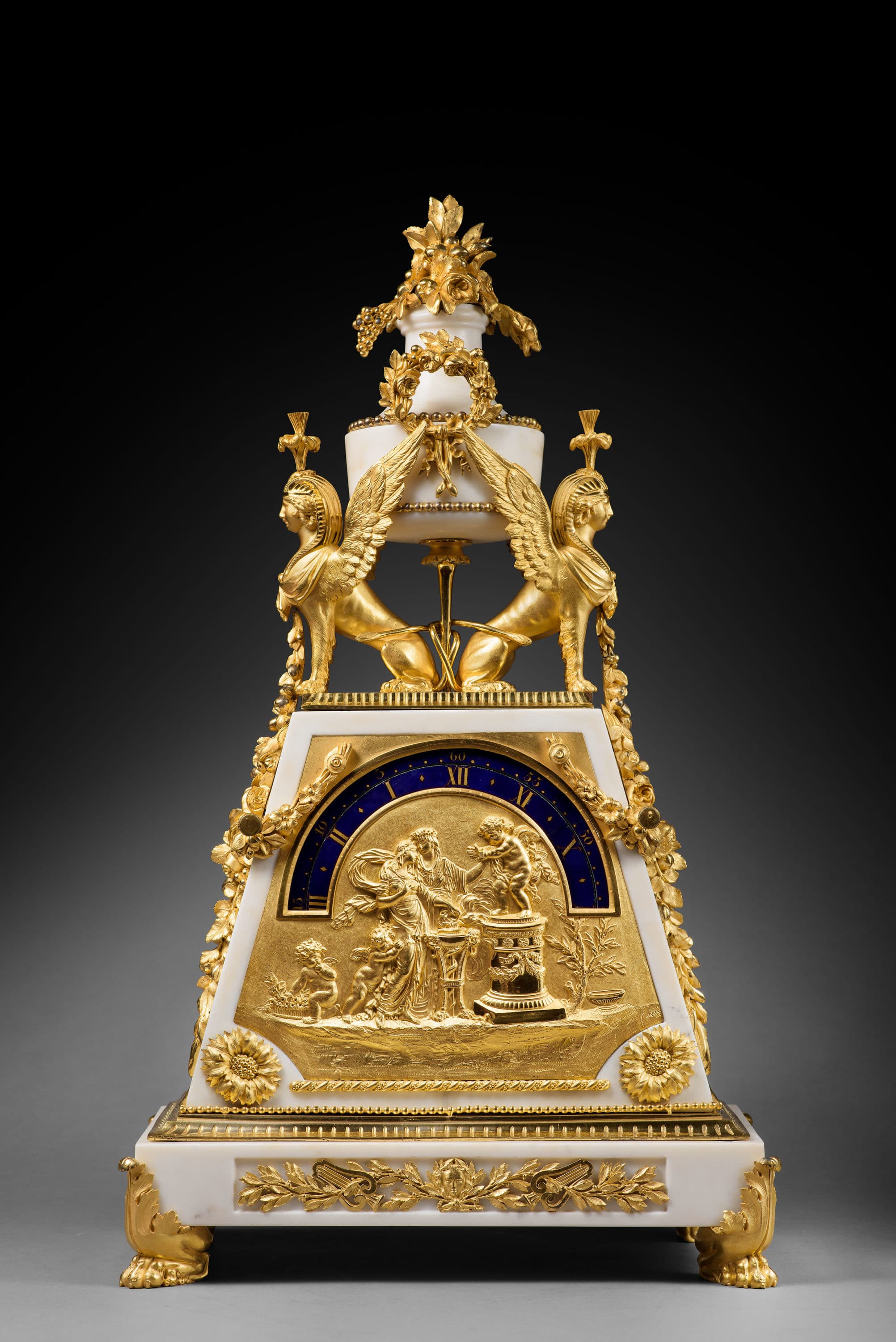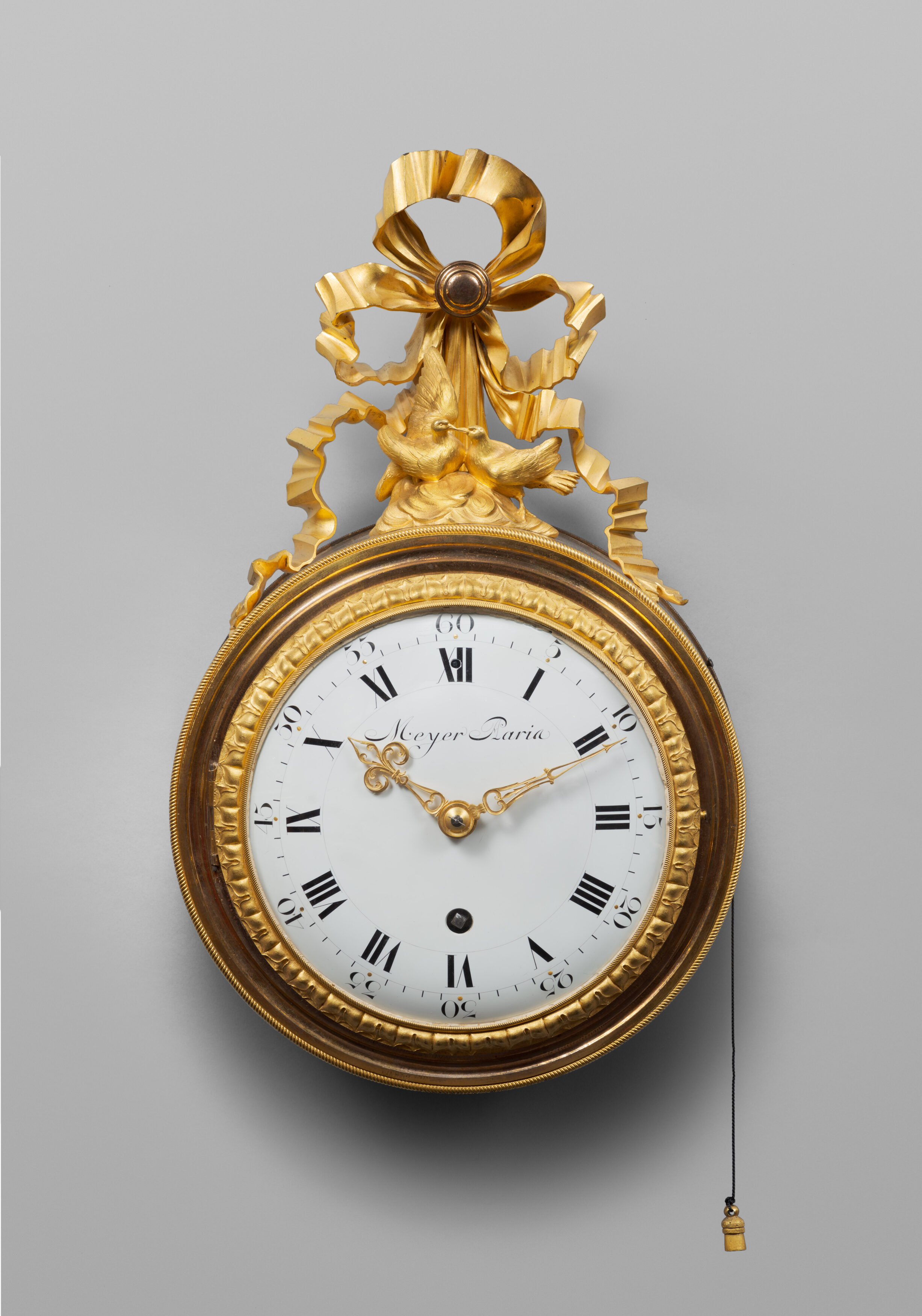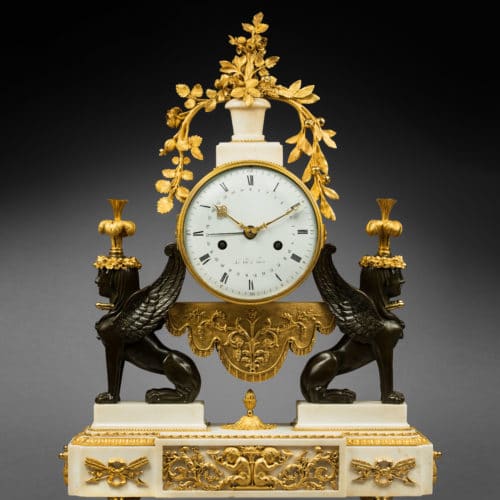Rare White Carrara marble and Gilt and Patinated Bronze Mantel Clock
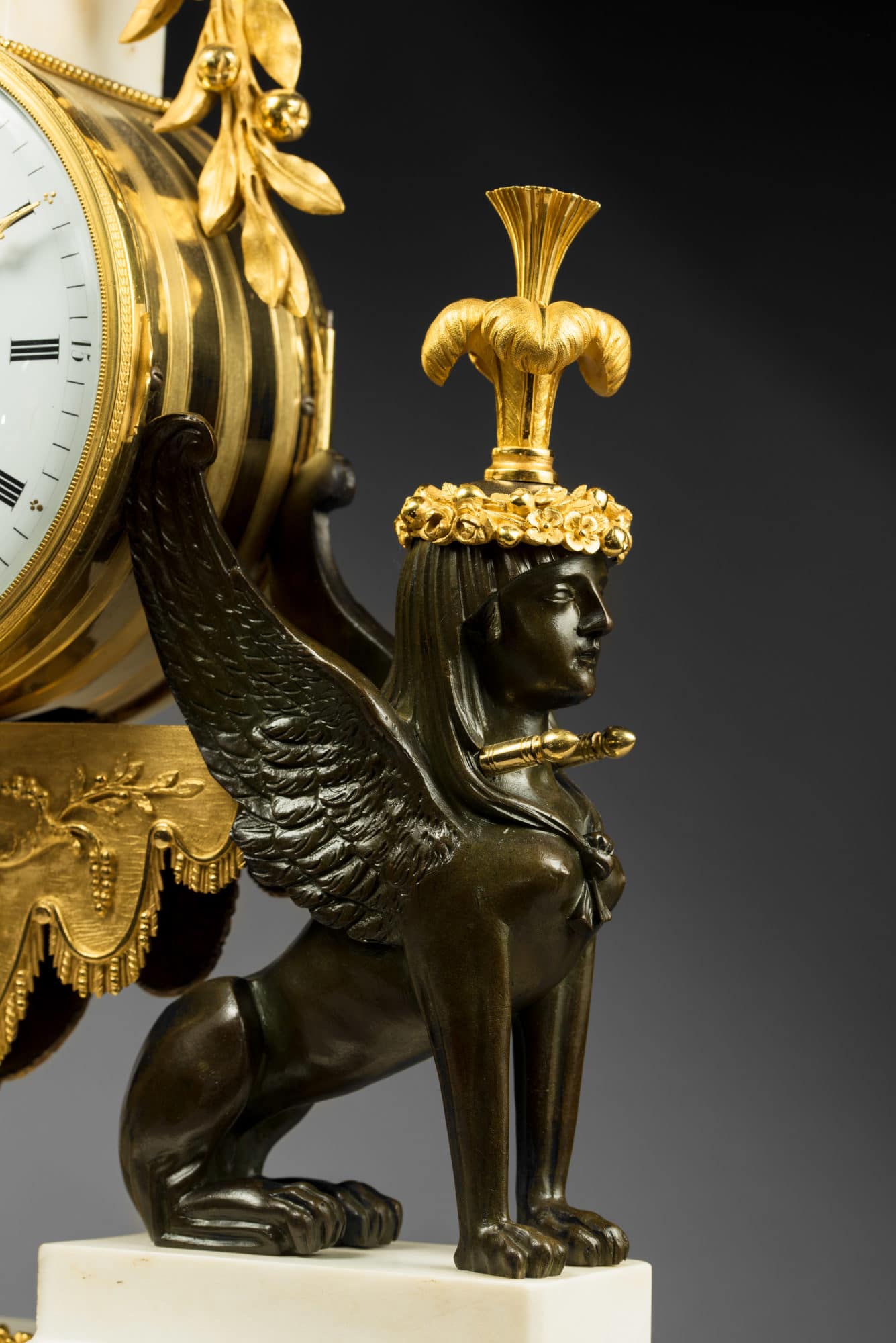
“Le Vol à Paris”
Case Attributed to François Rémond
Paris, late Louis XVI period, circa 1785-1790
The round enamel dial, signed “Le Vol à Paris”, indicates the Roman numeral hours, and the fifteen-minute Arabic numeral minutes and date, by means of two pierced gilt bronze hands and one blued steel hand. The neoclassical case is made of white marble and finely chased gilt and patinated bronze. The movement is housed in a drum case that is surmounted by an entablature upon which stands a vase issuing a bouquet of fruit and leaves whose swags fall to either side of the case. It is set upon a valance-covered stretcher that is carried by two magnificent sphinxes, which are proudly seated upon their haunches on two plinths, and wear plumed flower and leaf crowns. The rectangular base is richly decorated with applied chased and gilt bronze leaf and twisted rope friezes, trophies with ribbon-tied arrows and a central arabesque motif representing a flaming torch flanked by two trumpeting putti with bodies terminating in scrolling vines with bunches of grapes. The clock is raised upon four chased feet.
Discover our entire collection of antique mantel clocks for sale online or at the gallery.
La Pendulerie is the specialist in fine and rare antique clocks, based in Paris.
An early example of the Egyptomania that reigned in France during the reign of Louis XVI, this clock is one of the finest Parisian horological creations of its time. It is inspired by the work of contemporary designers, and particularly an engraving by Jean-François Forty which is illustrated in P. Kjellberg, Encyclopédie de la pendule française du Moyen Age au XXe siècle, Paris, 1997, p. 173, fig. C, as well as by a drawing by architect François-Joseph Bélanger (1744-1818) which depicts a clock that was delivered in 1781 for the Count d’Artois’s Salon in the Bagatelle pavilion; an “Artois model” clock is in the Wallace Collection in London (see Tardy, La pendule française, 2ème partie : Du Louis XVI à nos jours, Paris, 1975, p. 239).
The present example stands out for the seated position of the sphinxes, which is also found on a few other rare contemporary examples. Of these, one example was made by Godon for the King of Spain; it is today in the Royal Spanish Collection (illustrated in J. Ramon Colon de Carvajal, Catalogo de Relojes del Patrimonio nacional, Madrid, 1987, p. 77, catalogue n° 61). A second example, today in a private collection, is illustrated in M. Burckhardt, Mobilier Louis XVI, Editions Charles Massin, Paris, p. 25. A third example, which is particularly elaborate and is richly decorated with allegorical figures, was formerly in the Chappey collection (illustrated in P. Kjellberg, op.cit., Paris, 1997, p. 258, fig. A); Lepaute delivered one further such clock to the Count d’Artois; it is today displayed in the King’s Chamber in the Petit Trianon (see the exhibition catalogue Le château de Versailles raconte le Mobilier national, Quatre siècles de création, Paris, 2011, p. 149-151).
François Rémond (circa 1747 - 1812)
Along with Pierre Gouthière, he was one of the most important Parisian chaser-gilders of the last third of the 18th century. He began his apprenticeship in 1763 and became a master chaser-gilder in 1774. His great talent quickly won him a wealthy clientele, including certain members of the Court. Through the marchand-mercier Dominique Daguerre, François Rémond was involved in furnishing the homes of most of the important collectors of the late 18th century, supplying them with exceptional clock cases, firedogs, and candelabra. These elegant and innovative pieces greatly contributed to his fame.
